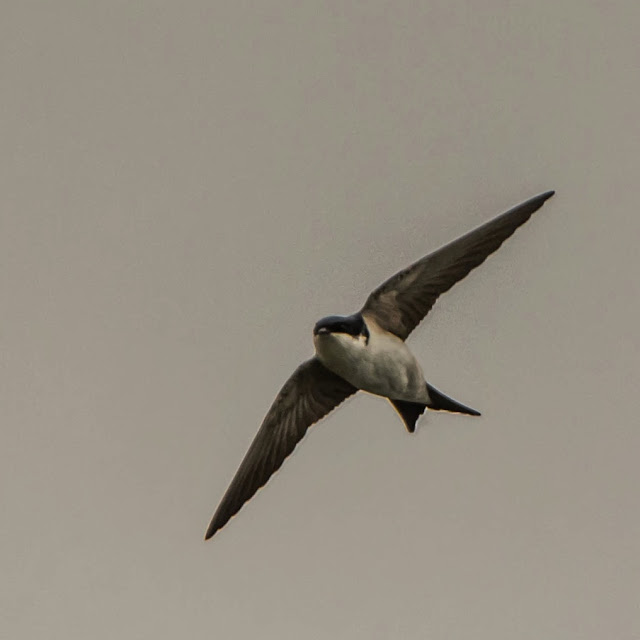Along with Michael Preston:
And Chris Ulliott:
Michael also sent us this pied - and we've had up to 2 white continental types on the wall and South Marsh East yesterday:
A red-necked reprise; the seemingly now departed grebe - a welcome visitor during its two week stay at the reserve (MP):
The ring-necked duck is still around though - thanks to Roy L for this one:
And Roy V for this cracker - the bird still present yesterday:
A smart new grebe on Sunday however - black necked making a one day visit to Watton NR - pictures by Roy V:
The reservoirs have been pulling in the hirundines in big numbers - chiefly thousands of sand martins (Roy L):
With smaller numbers of house Martins (Michael Preston):
And swallows (Roy V):
The walls too have been holding interest - three common sandpipers tonight - Roy L pics:
Other pictoral highlights include buzzard over South Marsh East being mobbed by a black headed gull:
With another perched on Watton - Andy Marshall:
Chiffchaff near the centre by Michael Flowers:
Willow Warbler by Michael Preston:
Little egret still on Hempholme this morning (MP)
With oystercatchers (MP):
And thanks to Roy L for water rail on South Marsh East:
Peacock by Alan Wrightson:
And the best of the unphotographed rest;
8 bramblings on the access road on Saturday
20+ lesser redpolls in D woods Saturday
Willow tit still present
Little gull Saturday
Crossbill Sunday
Avocets until Sunday
Sedge warbler and common whitethroat all abundant on site - the first lesser whitethroat on Monday
Marsh Harrier on Monday
5 swift over the res and 3 dunlin on the Marshes tonight.
Morrisons have also been doing some excellent work; its always a worry pulling the plug and not being sure the work can be done - but all credit to the digger crew who have managed to carry out lots of material for new breeding islands and wader feeding habitat. We'd have liked to have taken it further - but the digger slowly sinking even on bog mats understandably put the team off:



























































